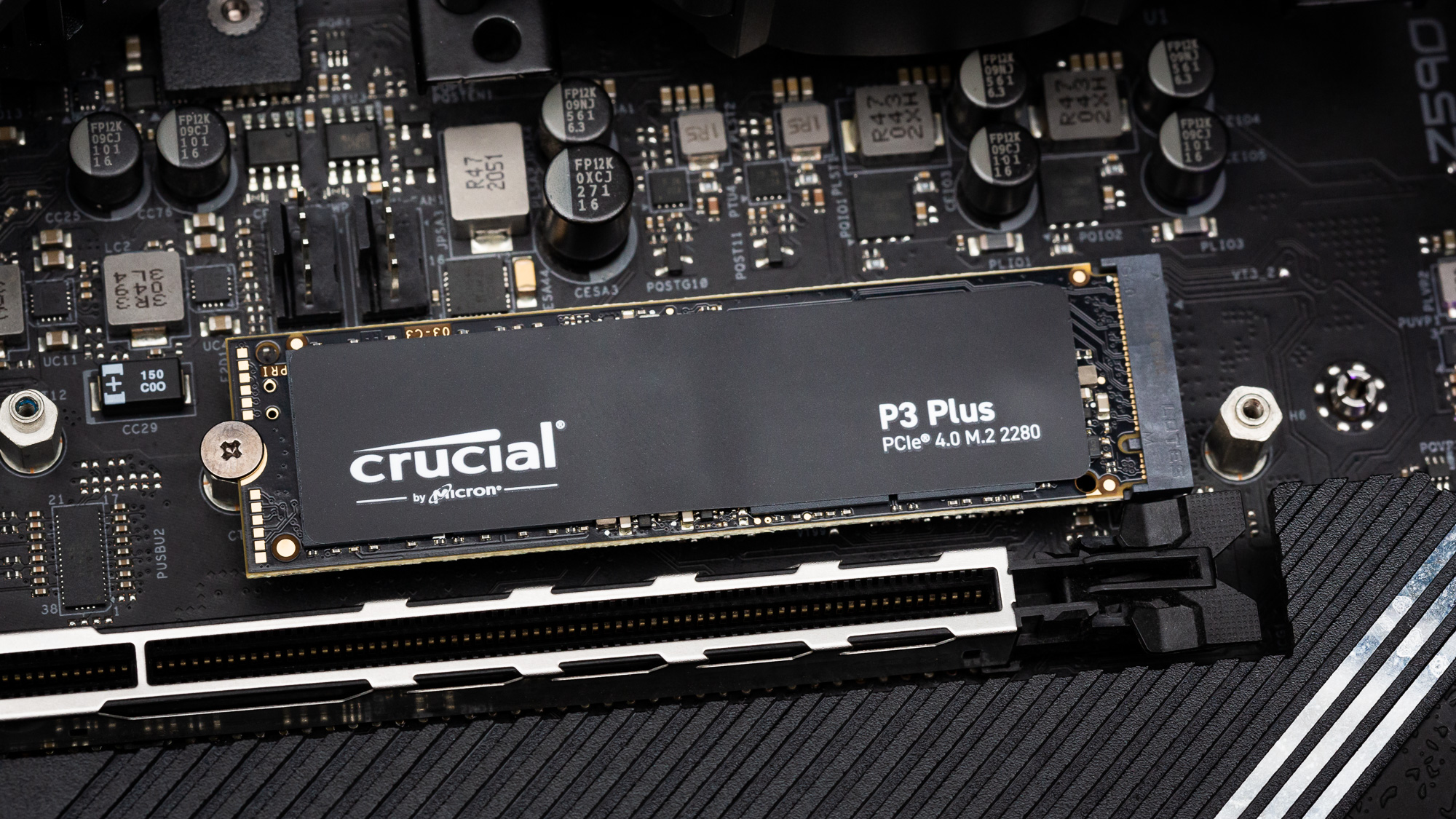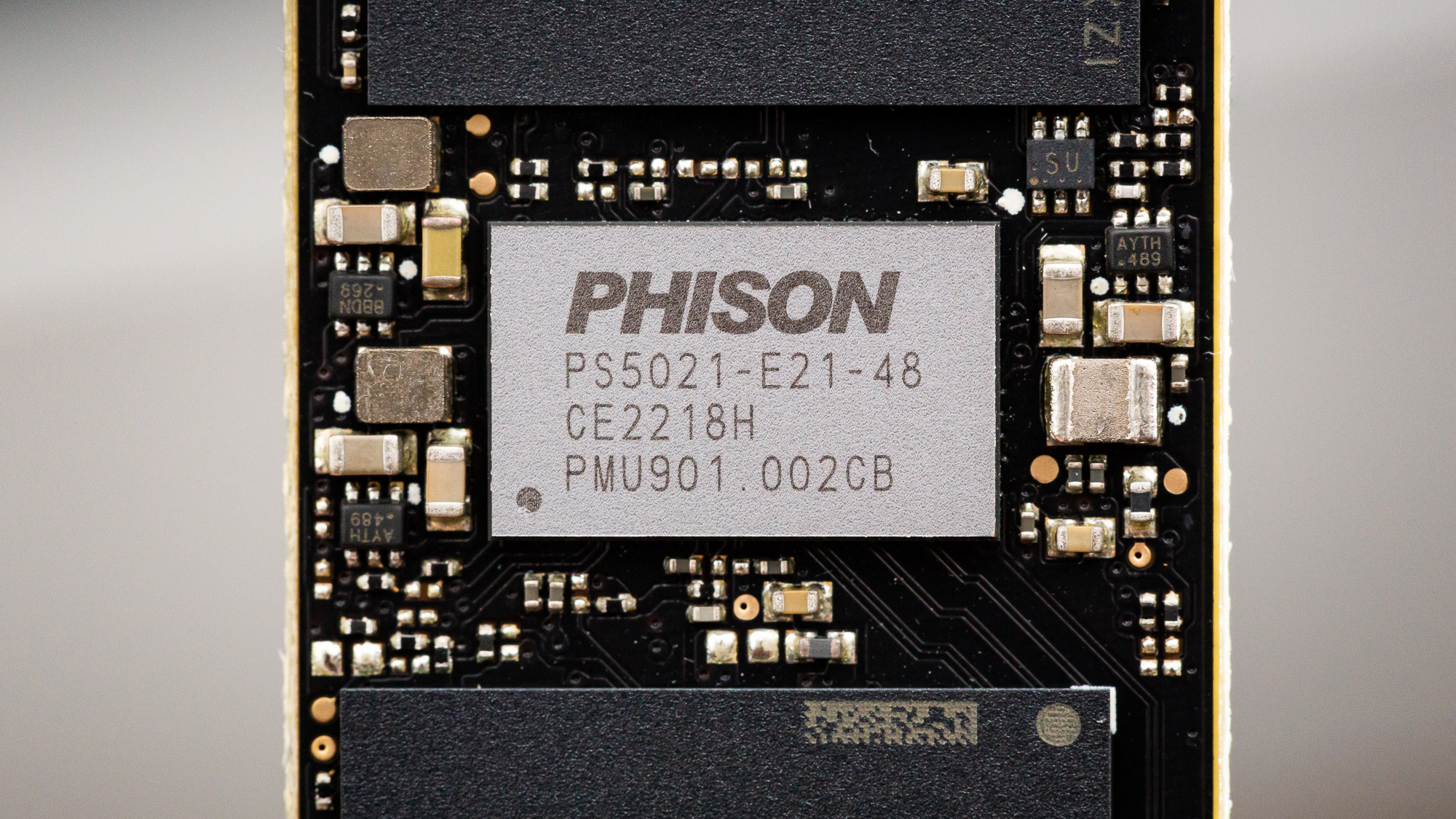Tom's Hardware Verdict
The Crucial P3 Plus enters a crowded market for budget PCIe 4.0 drives, managing to stand out by offering higher capacities. This is an efficient, capable drive but not without its caveats.
Pros
- +
High-capacity options
- +
Good value
- +
5-year warranty and software support
Cons
- -
QLC still has its drawbacks
- -
Middling performance
- -
Lower endurance than competitors
Why you can trust Tom's Hardware
The Crucial P3 Plus is the first drive we’ve tested with Phison’s E21T controller and Micron’s new 176-layer QLC flash. Starting at just $54 for the 500GB capacity or $94 for 1TB, it’s poised to be an inexpensive PCIe 4.0 option across a spectrum of available capacities for PC use. Unlike many of the other SSDs at this price-performance point, the P3 Plus offers up to 4TB of storage. And despite its budget price, the drive offers compelling performance while still being quite efficient. It also has a full-fledged five-year warranty and Crucial’s software support.
The budget PCIe 4.0 SSD space has been heating up for some time with several excellent drives in the mix such as the HP FX900, the Silicon Power UD90, and the WD SN770. The P3 Plus stands apart by using QLC NAND, which allows for higher capacities and a lower cost per GB, but slightly lesser performance than the best SSDs on the market.
While QLC has been paired in the past with the early-adopter Phison E16 controller, as on the Sabrent Rocket Q4, new controllers and Micron’s 176-layer QLC flash aim to supplant such obsolete relics. The new drives are more efficient and often faster, all with accessible pricing.
Although Crucial uses proprietary controllers on its P5 and P5 Plus drives it has deferred to licensed solutions on its budget models. The P2 came with Phison’s E13T and the P3 Plus is using the E21T which we first reviewed on the UD90. We were relatively impressed with the UD90’s performance, but the QLC on the P3 Plus should not be quite as capable. It’s exciting to see realistically affordable 2TB and 4TB options in this space, especially as the P3 Plus would work well in a laptop.
Specifications
| Product | 500GB | 1TB | 2TB | 4TB |
|---|---|---|---|---|
| Pricing | $ 59.99 | $ 99.99 | $ 189.99 | $ 399.99 |
| Capacity (User / Raw) | 500GB / 512GB | 1000GB / 1024GB | 2000GB / 2048GB | 4000GB / 4096GB |
| Form Factor | M.2 2280 | M.2 2280 | M.2 2280 | M.2 2280 |
| Interface / Protocol | PCIe 4.0 x4 | PCIe 4.0 x4 | PCIe 4.0 x4 | PCIe 4.0 x4 |
| Controller | Phison E21T | Phison E21T | Phison E21T | Phison E21T |
| DRAM | No (HMB) | No (HMB) | No (HMB) | No (HMB) |
| Flash Memory | 176-Layer Micron QLC (N48R) | 176-Layer Micron QLC (N48R) | 176-Layer Micron QLC (N48R) | 176-Layer Micron QLC (N48R) |
| Sequential Read | 4,700 MBps | 5,000 MBps | 5,000 MBps | 4,800 MBps |
| Sequential Write | 1,900 MBps | 3,600 MBps | 4,200 MBps | 4,100 MBps |
| Random Read | N/A | N/A | N/A | N/A |
| Random Write | N/A | N/A | N/A | N/A |
| Security | N/A | N/A | N/A | N/A |
| Endurance (TBW) | 110TB | 220TB | 440TB | 800TB |
| Part Number | CT500P3PSSD8 | CT1000P3PSSD8 | CT2000P3PSSD8 | CT4000P3PSSD8 |
| Warranty | 5-Year | 5-Year | 5-Year | 5-Year |
The Crucial P3 Plus is available at 500GB, 1TB, 2TB, and 4TB capacities. The lowest capacity isn’t too exciting as dense QLC performs best at higher capacities where the controller has sufficient dies for parallelization. This drive reaches its peak at 2TB with sequential reads and writes at 5.0 / 4.2GBps, respectively. Most interesting is the 4TB option as this is a lot of space for a M.2 drive, particularly one in the budget segment with only a four-channel controller.
Crucial backs this with a 5-year warranty, which is quite nice. The write endurance, at 200-220TB per TB of capacity, is more disappointing. Solidigm’s recently-announced P41 Plus, which with the SM2269XT controller and 144-layer QLC should be direct competition, has almost double the TBW. This is interesting as Micron has used that particular controller on its OEM 2400 with the 176-layer QLC found on the P3 Plus. Solidigm is instead using the same QLC as found on the 670p. We will have to review the P41 Plus in the future to see if its novel caching scheme gives it a leg up, but for now, the P3 Plus at least has the advantage of a 4TB option.
The 1TB pricing ($94 at press time) is decent, though not much cheaper than most competitors. However, having 2TB and 4TB options is very nice for this market segment and Crucial already has had this drive available at less than $325 at the latter capacity. The P2 likely sold well for Crucial and as such the P3 and P3 Plus are positioned to undercut the market by using QLC, particularly at higher capacities. This makes for a compelling compromise as older PCIe 3.0 options are retired, especially because this hardware promises to be more efficient.
Get Tom's Hardware's best news and in-depth reviews, straight to your inbox.
Software and Accessories
Crucial has some downloads on its site that apply to this drive. The SSD toolbox, or Crucial Storage Executive, is useful to get basic information about your drive. It can also be used to get firmware updates and for other functions, although we recommend against using the Momentum Cache feature, which uses some of your computer’s DRAM as a cache. The site also links to Acronis True Image for Crucial which can be used for disk cloning and backups.
A Closer Look
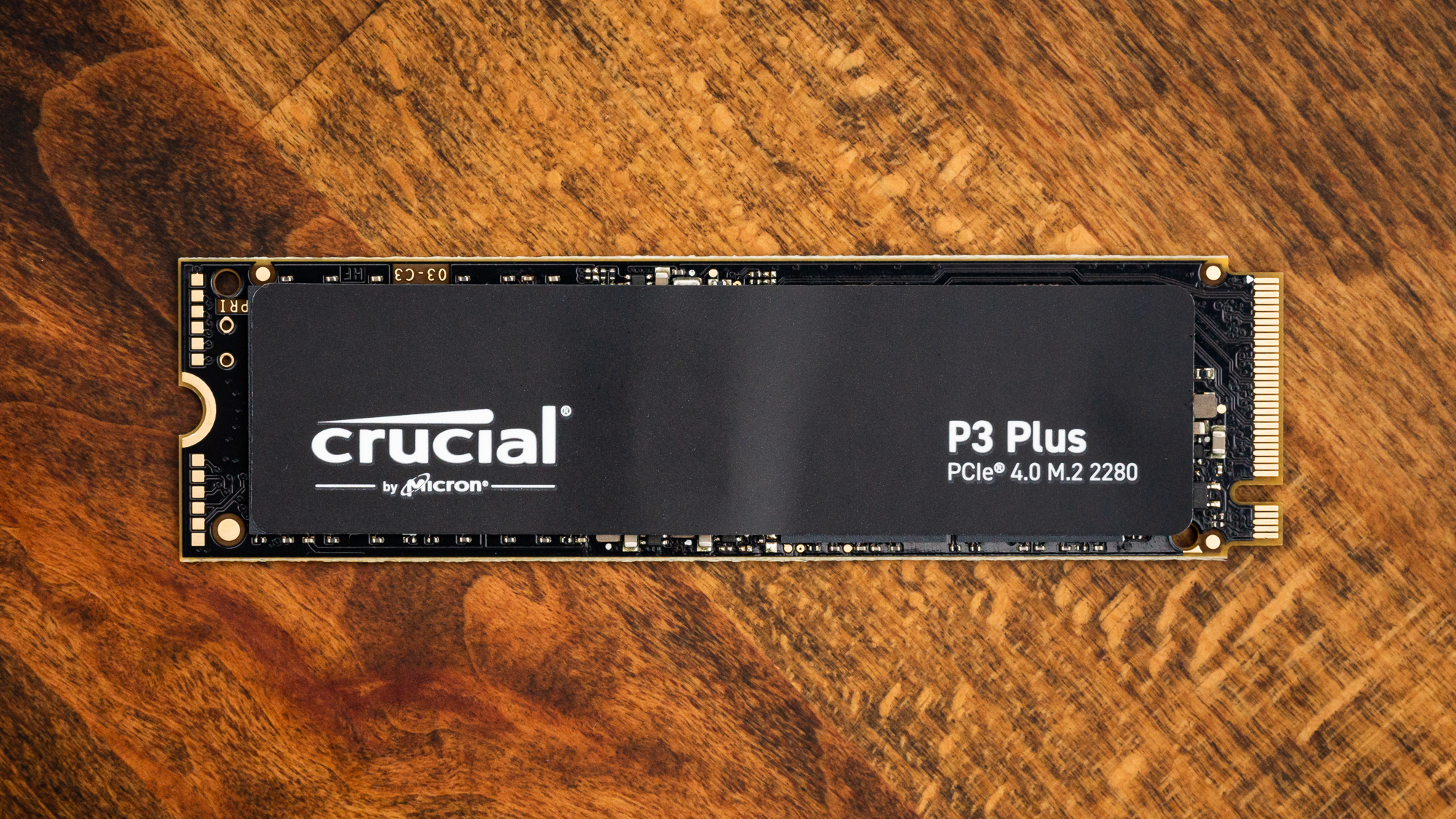
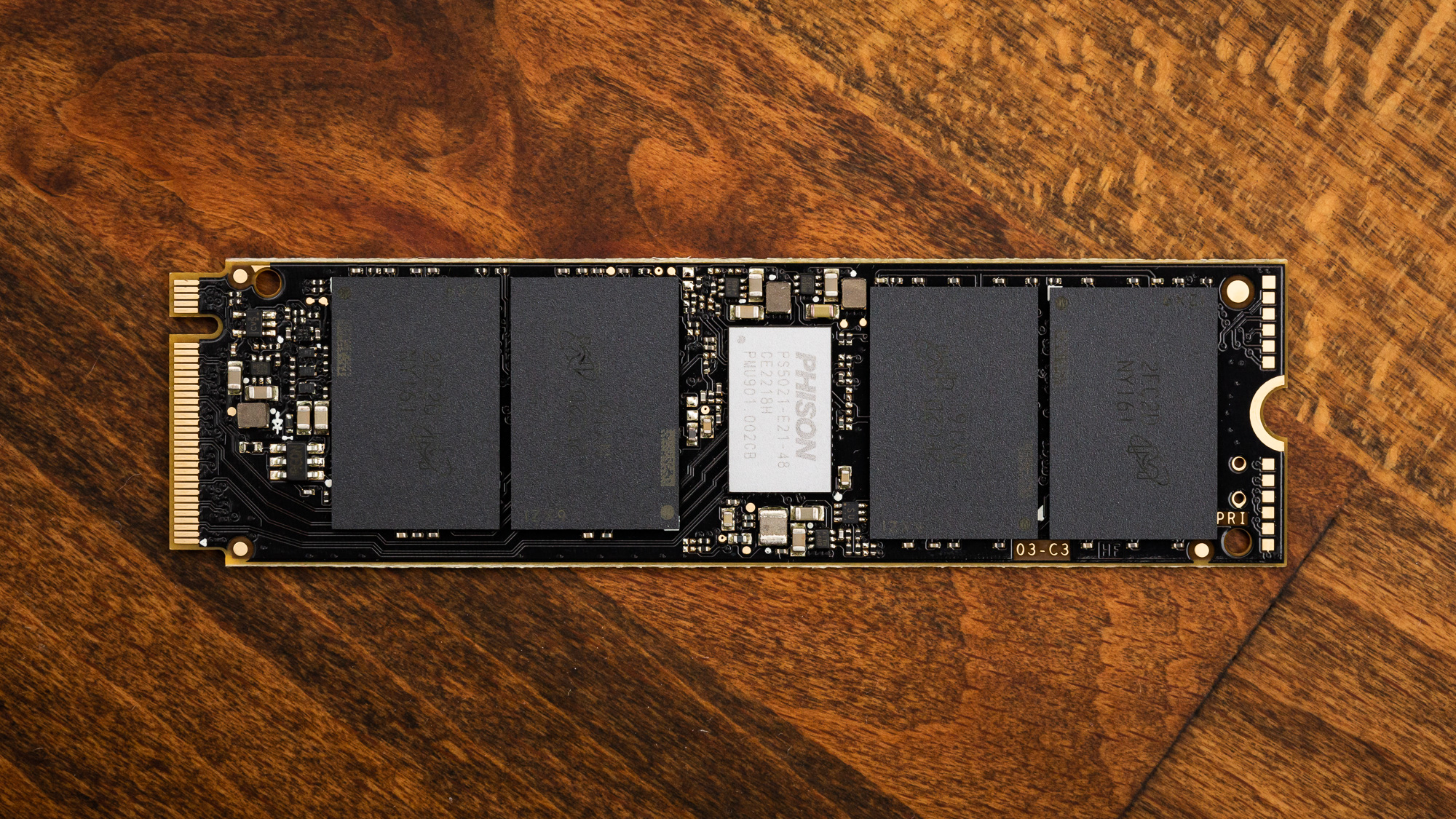
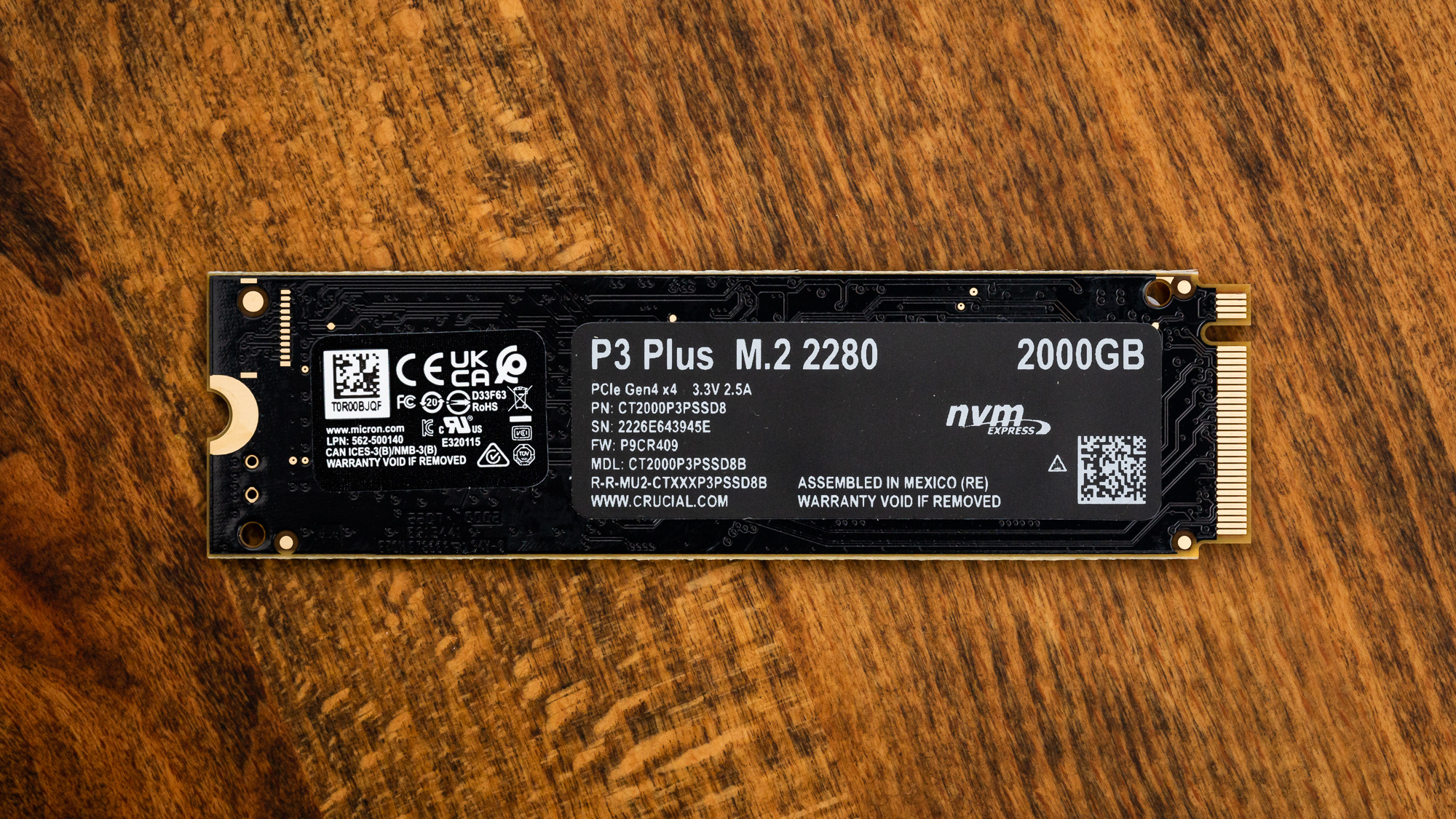
The 2TB Crucial P3 Plus is single-sided with simple labels that don’t aid in heat dissipation. The controller is placed in-between two pairs of NAND packages with no DRAM present. This type of layout can be beneficial for design and for thermal balancing.
The Phison E21T is a relatively new DRAM-less, PCIe 4.0 controller. It’s decidedly a budget option and was put to good use on the Silicon Power UD90. It is capable of handling up to 4TB of flash, although it should be best at 2TB with QLC due to die count.
It has a lot of competition with the SM2269XT and IG5220 controllers, not to mention WD’s proprietary design as found in the SN770. These newer, mid-range PCIe 4.0 controllers have proven to be strong foundations for value SSDs. The P3 Plus is the first implementation with QLC that we have tested.
The four flash packages are labeled NY161. This is quite similar to the NY165 packages we saw on the new 4TB Crucial X6. This is Micron’s fresh 176-layer QLC (N48R) in a 4DP/QDP configuration, that is four 1Tb dies per package. This flash should become more common and may be found in older Crucial products as an organic upgrade. It’s comparable to Intel’s, now Solidigm’s, 144-layer QLC, albeit on a different architecture. Other flash manufacturers, such as Kioxia and SK hynix, have their own 176-layer QLC designs.
QLC tends to have higher read latency than TLC and one way to improve read performance is to allow each of four planes in a flash die to be read independently. QLC also programs or writes much more slowly, so enhanced programming algorithms can help it reach the desired values more quickly. QLC is ultimately about density - capacity per square millimeter - so all major manufacturers are putting control circuitry (CMOS) under the layered flash array. All of this helps make QLC more affordable while still being performant enough to compete with TLC options.
With this particular generation, Micron’s first-of-its-type for QLC, the manufacturer has focused on simplifying the architecture while getting the most out of it through the use of various techniques. For example, the dies are accessed in an order that minimizes peak power draw. The goal is to maintain I/O performance without a degradation in endurance or an increase in power consumption. While most of these elements are invisible, it allows them to bring out a 4TB drive at record low GB/$ prices. This is important within the context of “good enough” - and bringing NVMe to the masses.
MORE: Best SSDs
MORE: How We Test HDDs And SSDs
MORE: All SSD Content

Shane Downing is a Freelance Reviewer for Tom’s Hardware US, covering consumer storage hardware.
-
cyrusfox This is impressive, is anyone else achieving QLC on charge trap NAND yet? 220 cycles is respectable for a first attempt.Reply
As far as I know this is the first charge trap QLC ssd on the market. Microns old QLC drives and NAND(Which they sell to Rocket and others) were all based on Floating Gate NAND they co-developed with Intel now Solidigm which Hynix bought from Intel (Solidigm , lame name). Micron's old QLC SSD drive was essentially identical to Intel's 660p or 665p(Identical NAND, different controller tuning). Solidgm is the only NAND manufacturer still utilizing charge trap storage which appears to have an inherrent advantage at multiple charge states per cell compared to charge trap which the other NAND makers are utilizing (Samsung, Hynix, Micron). This is supported by Solidigm being the first to show off PLC tech based on floating gate. With charge trap successfully making it to market with QLC it's still in the race for adding addition bits per cell but likely 2-3 years behind (based on the first qlc drive which came out 2019 - Intel 660p). -
Albert.Thomas Replycknobman said:IMO the cost savings is not worth the tradeoff of reduced performance and endurance.
The reduced performance doesn't bother me, the price of these SSDs is very attractive.
However, the reduced endurance guarantees does have me a little worried. -
escksu ReplyAlbert.Thomas said:The reduced performance doesn't bother me, the price of these SSDs is very attractive.
However, the reduced endurance guarantees does have me a little worried.
200TBW is still decent because most end users do not overwrite their drives that many times (if you do, you need a bigger drive).
But the cost $189 for 2TB. You can find many TLC drives at that price range too. -
escksu Replyjackt said:random write is as good as skhynks p41 ! but random read is slow !
The write is good because of the huge SLC cache. But you need a big drive to have a big cache -
Albert.Thomas Replyjackt said:random write is as good as skhynks p41 ! but random read is slow !
I've tested this drive myself, the write performance of the P3 Plus is incredible.
The read performance is reflective of it's budget price, however.
